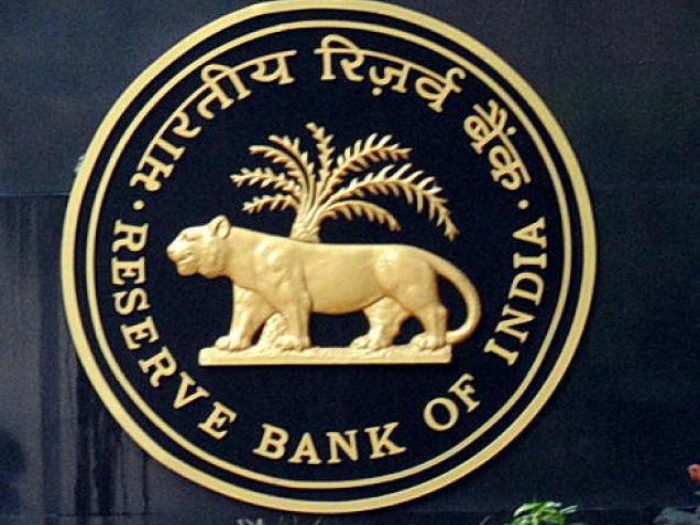Post By
Yominame
Date Posted
10-Mar-2014
LOCATION
Mumbai
Why 50p coins are headed to the smelter, and small notes towards extinction
It is interesting to note that even as the Reserve Bank of India (RBI) is planning to demonetise currency printed before 2005, the aam aadmi is himself demonetising currency coins at the bottom end – especially the 50 paise coin, the lowest one available right now. The 25 paise coin became history in 2011.
While the RBI’s ostensible reason for withdrawing the old notes is to issue new ones with better security features and reduce counterfeiting, The Times of India reports that the general public is beginning to refuse 50 paise coins, given that the currency is practically worthless in everyday use.
However, the most interesting point the newspaper makes is that coins are being collected by weight. It quotes a raddiwala as offering to pay Rs 30 for a kilo of 50 paise coins. What this could mean is that 50 paise coins are now more valuable if they are melted for their metal content than as a means of exchange.
Either way, whether the coins are being melted or being pushed out of circulation by public rejection of their worth in transactions, the larger point is this: inflation is playing havoc with the currency, whether printed notes or coins.
Consider the logic of note and currency printing.
The government is trying to reduce the printing of currency notes – soon Rs 10 notes will be replaced fully by coins – because notes have a short wallet life and cost a lot to print. A Rs 10 note lasts nine to 10 months and cost 95 paise to print; the Rs 10 coin last years and costs Rs 6.60 to mint.
This is why smaller value notes are going out and coins replacing them. Soon Rs 50 could be the minimum value note in circulation, though there is still a Rs 20 note in existence right now.
However, as the case of the 50 paise coin shows, lower-level coins have a way of demonetising themselves due to inflation.
As Vivek Moorthy, a professor of economics at the Indian Institute of Management, Bangalore, wrote : “Although coins are physically durable, nevertheless they fail to withstand inflation. They tend to disappear with inflation due to one of the two reasons. First, it becomes profitable to melt down the coin because the metallic value has risen above the face value. The higher the price level, the more the meltdown.”
Secondly, says Moorthy, “low denomination currency also may disappear due to high inflation when the lowest value transactions considerably exceed the face value of the currency. At present, there are hardly any items that can one can buy for 50 paise… So, one has to accumulate a stash of coins (or a wad of small notes) to pay for items. This is too much of a nuisance for both customers and sellers and so they are induced to throw away the small denominations.”
Moorthy explains how. Assuming it is worth melting a coin once its metal value is 30 percent more than its face value, then at a 10 percent annual inflation rate, if the value of the metal in the coin rises in line with inflation, by the end of year three the coin becomes melt-worthy.
The moral of the story is simple: if government wants to make it worthwhile to mint coins and notes where they hold their value for a longer stretch of time, it has to bring down inflation. Otherwise, the mere cost of printing notes and coins will add to inflation. (As an aside, it is worth noting that while note-printing is the liability of the Reserve Bank of India, coin minting is the government's responsibility.)
While all governments have been experts at debauching the value of the rupee by unending note-printing and deficit financing, in the short run one way to rein in the cost of printing and minting money is to simply replace the existing rupee with a new rupee where the old Rs 100 equals a new Re 1.
Replacing all old notes with new ones will cost some economic disruption, but the disruption may be worth it if it is accompanied by a new - and more stringent - Fiscal Responsibility and Budget Management Act (FRBM) that strongly limits the government’s power to print currency by monetising fiscal deficits. The current FRBM Act is too easy to change and hence worthless.
The other way to cut currency costs is to mandate the increasing usage of credit and debit cards by offering discounts on their usage. Utility companies already offer bill discounts on electronic or credit card payments, and if all transactions done by cards get a 0.5 percent discount, people will start using money less.
Similar Posts
Capital goods shares extend rally, L&T surges 7%
The S&P BSE Capital goods index, the largest gainer among the sectoral indices, is up 5% or 490 points at 11,273 points, as compared to 0.65% or 140 points gain in benchmark S&P BSE Sensex. The capital goods index hits high of 11,317 in intra-day trades, its highest level since December 2012. Since February 17, the capital goods index has rallied 18% after Finance Minister P Chidambaram, in the Interim Budget for 2014-15 fiscal, reduced the excise duty on capital goods has been reduced...
Maruti's Gujarat plan: MFs head to Sebi, LIC
Seven leading mutual funds have sought a meeting with the Securities and Exchanges Board of India (Sebi) and Life Insurance Corporation of India (LIC) to explain their concern over Suzuki's decision to set up a 100 per cent subsidiary to implement its proposed plant in Gujarat. LIC is one of the largest Indian shareholders in Maruti Suzuki India Ltd (MSIL) with a 6.93 per cent stake and its view on the issue will be crucial to the direction of the battle between the two sides.
Sensex rises over 300 points, Nifty hits 6,500 level
he benchmark S&P BSE Sensex on Friday soared to a new record high of 21,828 points or 1.46 per cent higher on heavy foreign capital inflows, tracking positive domestic and global cues. Good buying was observed in banking index (bankex), capital goods, oil and gas and auto sectors, while selling pressure was seen in IT and healthcare sectors. Following suit, the NSE index Nifty hit psychological 6,500-level for the first time ever in late morning trade on sustained foreign capital...
Warning: Stocks Will Collapse by 50% in 2014
It is only a matter of time before the stock market plunges by 50% or more, according to several reputable experts. “We have no right to be surprised by a severe and imminent stock market crash,” explains Mark Spitznagel, a hedge fund manager who is notorious for his hugely profitable billion-dollar bet on the 2008 crisis. “In fact, we must absolutely expect it." Unfortunately Spitznagel isn’t alone. “We are in a gigantic financial asset bubble,” warns...
TGIP creating the ‘Magic of Being Digital’
TGIP is a trusteddigital creative agency, who believes in the‘Magic of Being Digital’, by planning and creating strategies that is essential for building relationships with the brands. The brands that are able to associate with their customers, ensure increased worth and reliability. Getting connected with the brands is at the heart of what we do.
TGIP - Advertising Agency in Noida
TGIP is a trusted digital creative agency that believes in the 'Magic of Being Digital' by offering a range of services that includes Online Marketing, Social Media Marketing, SEO and many more.
Buy Shri Radha SkyGardens with attractive payment plan
SHRI Radha SkyGardens in Gr. Noida West is the best residential property that offers perfectly designed apartments to provide you with ultimate contemporary living. The apartments are available in 2/3/4 BHK to select from as per your convenience. These apartmentsare meticulously designed and built to ensure harmonious lifestyle and enriched living.
Real Estate | Residential Property in Delhi/NCR | Properties for Buy-Sell-Rent in Delhi/NCR
buy real estate property-Find info about Property in Delhi/NCR, Buy, Sale, Rent residential property, apartments, flats, houses, villas, and plots. Search for best residential real estate properties in Delhi/NCR.
Young buyers enthusiastic to buy real estate property in Gurgaon
Youthful purchasers/financial specialists matured somewhere around 25 and 29 years are most hopeful about property in Gurgaon. Gurgaon is presumably one of the quickest developing land showcases in India today. It has developed on the once more of the IT upset that hit the city a few years prior. It may not be right to expect that the IT experts have given the best impulse to the private business of the city. Weigh out real estate in Gurgaon
Make a sound investment by buying best real estate property
In spite of the fact that one can't make land speculations totally hazard free, purchasers must be mindful of the pitfalls that lie headed straight toward putting resources into steadfast property. In the event that you are the first to buy real estate property, you must take the best mind in gathering all the in creation you can about your buy. Right from the essential realities like status of the social and physical base of the zone to the lawful and fiscal...

















